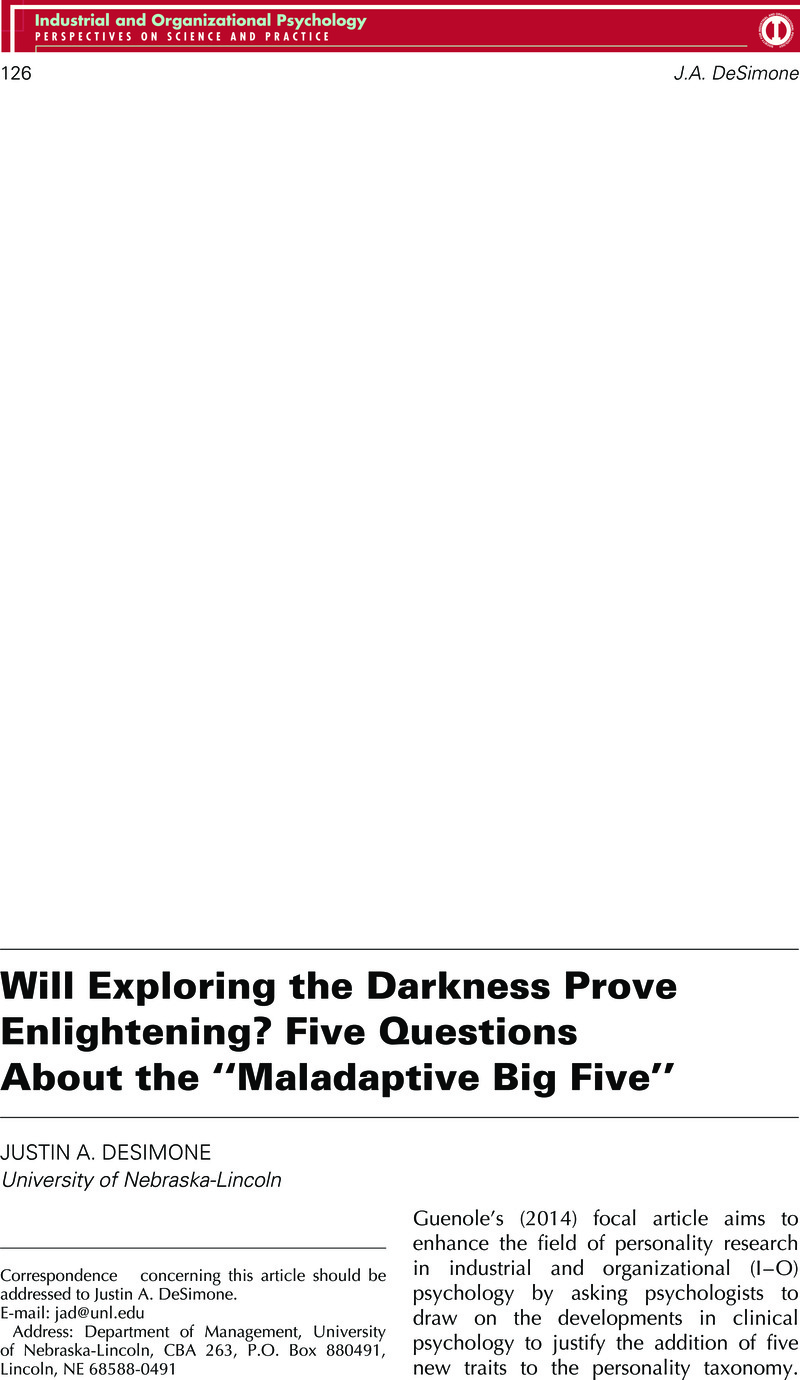Crossref Citations
This article has been cited by the following publications. This list is generated based on data provided by Crossref.
Woo, Sang Eun
Chae, Minwoo
Jebb, Andrew T.
and
Kim, Yongdai
2016.
A Closer Look at the Personality-Turnover Relationship.
Journal of Management,
Vol. 42,
Issue. 2,
p.
357.
Harms, P. D.
Wood, Dustin
and
DeSimone, Justin A.
2019.
Just because it’s dark doesn’t mean that we can’t go there.
Industrial and Organizational Psychology,
Vol. 12,
Issue. 2,
p.
206.





